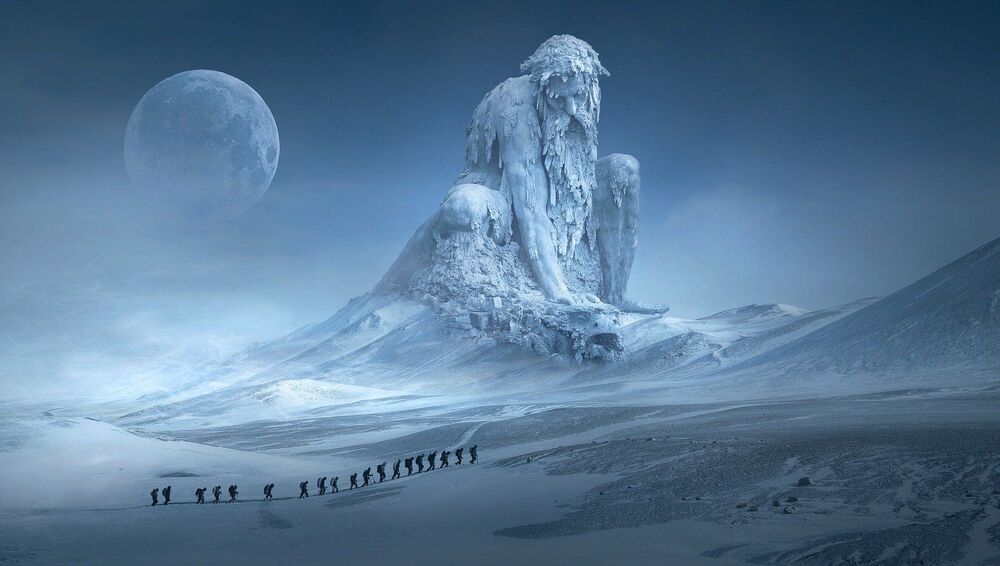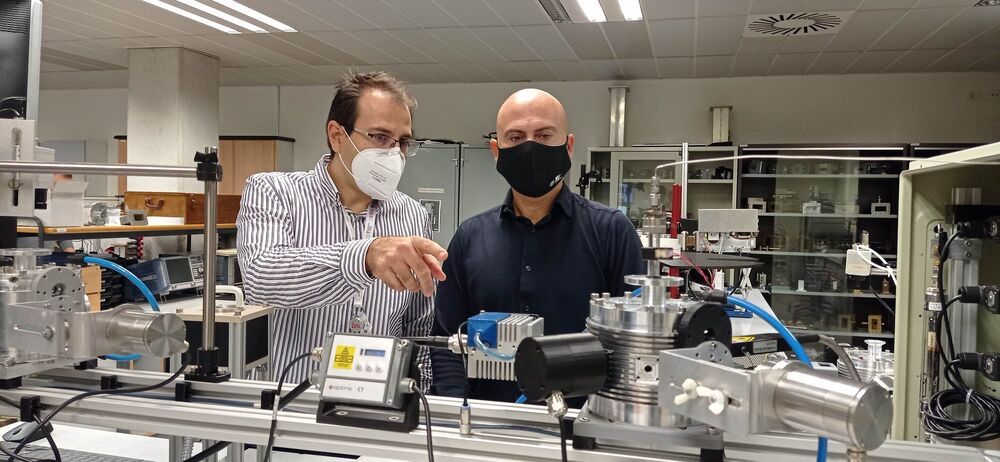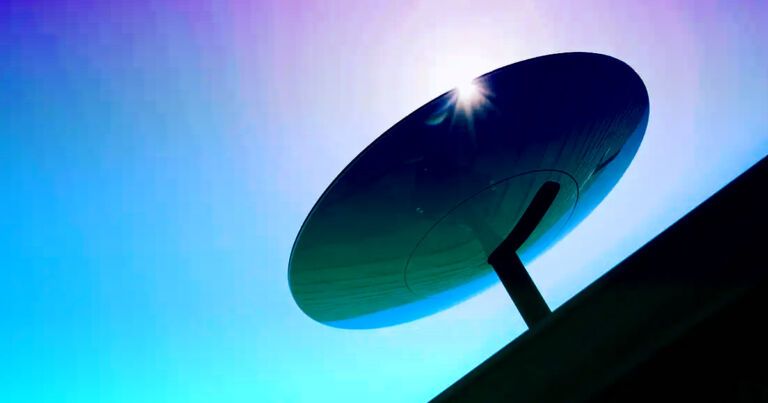Humanoid robots of tomorrow could feel pain just like us.



BMW is launching the iX3 electric SUV in Europe with the vehicle arriving at dealerships from China.
Here we share a close look photo gallery of the new electric vehicle.
When unveiling the BMW iX3 concept vehicle in 2018, the German automaker said that it’s going to be the first electric vehicle based on its fifth-generation electric powertrain technology, which is designed to enable longer electric range.
Nuclear fusion is the great hope for generating clean power. Scientists in France have started assembling an enormous international fusion reactor known by the acronym ITER. It has already taken ten years and a global scientific effort to get this far. And now the main construction at the huge complex in southern France will begin, with components sent from all over the world. The idea is to create energy not by splitting atoms like nuclear power stations do now, but by fusing them together.
Subscribe: https://www.youtube.com/user/deutschewelleenglish?sub_confirmation=1
For more news go to: http://www.dw.com/en/
Follow DW on social media:
►Facebook: https://www.facebook.com/deutschewellenews/
►Twitter: https://twitter.com/dwnews
►Instagram: https://www.instagram.com/dw_stories/
Für Videos in deutscher Sprache besuchen Sie: https://www.youtube.com/channel/deutschewelle
#ITER #NuclearFusion #ClimateChange

Woah o,.o!
In recent years, artificial intelligence (AI) tools, including natural language processing (NLP) techniques, have become increasingly sophisticated, achieving exceptional results in a variety of tasks. NLP techniques are specifically designed to understand human language and produce suitable responses, thus enabling communication between humans and artificial agents.
Other studies also introduced goal-oriented agents that can autonomously navigate virtual or videogame environments. So far, NLP techniques and goal-oriented agents have typically been developed individually, rather than being combined into unified methods.
Researchers at Georgia Institute of Technology and Facebook AI Research have recently explored the possibility of equipping goal-driven agents with NLP capabilities so that they can speak with other characters and complete desirable actions within fantasy game environments. Their paper, pre-published on arXiv, shows that combined, these two approaches achieve remarkable results, producing game characters that speak and act in ways that are consistent with their overall motivations.

A team of researchers from the Polytechnic University of Valencia and the Spanish National Research Council (CSIC) has discovered a new method that makes it possible to transform electricity into hydrogen or chemical products solely using microwaves—without cables and without any type of contact with electrodes. This represents a revolution in the field of energy research and a key development for the process of industrial decarbonisation, as well as for the future of the automotive sector and the chemical industry, among many others. The study has been published in the latest edition of Nature Energy, where the discovery is explained.
The technology developed and patented by the UPV and CSIC is based on the phenomenon of the microwave reduction of solid materials. This method makes it possible to carry out electrochemical processes directly without requiring electrodes, which simplifies and significantly cheapens its practical use, as it provides more freedom in the design of the structure of the device and choosing the operation conditions, mainly the temperature. It is a technology with great practical potential, especially for its use in storing energy and producing synthetic fuels and green chemical products. This aspect has significant importance today, as both transportation and industry are immersed in a transition to decarbonise, meaning they have to meet very demanding goals between 2030 and 2040 to decrease the consumption of energy and substances from fossil sources, mainly natural gas and oil, highlights José Manuel Serra, research lecturer of the CSIC at the Chemical Technology Institute.
I highly recommend checking this fantastic look at Deep Blue and the fascinating role chess has played in the ongoing development of artificial intelligence.
After an electrical engineer enters the field of computer chess, his creation captures the attention of the world as he attempts to defeat the world chess champion.
Patreon: https://www.patreon.com/fredrikknudsen
Twitter: https://twitter.com/FredInTheKnud
Music by Ryan Probert: https://twitter.com/ProbeComposer

Researchers from Spain have found a cleaner and cheaper way to extract hydrogen from water.
Could this help make hydrogen the preferred fuel source of the future? 😃 article from theregister.com.
It’s really dope. Yep it’s an energy-efficient process kicked off by gadolinium-doped cerium dioxide.

It seems Starlink will give other service providers a run for their money. 🙂
Managing Expectations
SpaceX made its expectations clear from the beginning: The space company called the public test a “Better Than Nothing Beta” and suggested users might see speeds of 50 to 150 Mbps.
“Starlink will forever change the game,” one user from rural Montana said on Reddit as they shared their 174 Mbps download speeds. Another beta tester boasted of their results in Seattle, which were slightly lower but still better than 95 percent of the U.S.
Origami-inspired tissue engineering — using eggshells, plant leaves, marine sponges, and paper as substrates.
Ira Pastor ideaXme life sciences ambassador interviews Dr. Gulden Camci-Unal, Ph.D. Assistant Professor, at the Department Chemical Engineering, Francis College of Engineering, UMass Lowell.
Ira Pastor comments:
A few episodes ago ideaXme hosted the University of Michigan’s Dr. Bruce Carlson. We spoke to him about the interesting topic of the importance of “substrate” in regenerative processes, for both the maintenance of normal tissue functions, and in the migration of cells or changes to tissue architecture that are part of healing processes.
Substrate is broadly defined as the surface or material on, or from which, cells / tissues live, grow, or obtain nourishment, and have both biochemical, as well as biomechanical functions.
We’re all too familiar with the work-play balance we strive to juggle in the 21st century. It’s virtually impossible, right? We’re often faced with a long and busy commute to work, using dated public transport or busy highways, only to find ourselves sitting in a dull office all day long. Well Tencent is about to revolutionize the work-play life of 80,000 people in the city of Shenzhen, with a next-century approach!
Following Huawei’s campus-style city, Chinese technology company Tencent, the driving power behind instant messaging apps WeChat and QQ, has made promises to build an entire mini-city off the banks of the Pearl River in Shenzhen, where the company has its headquarters. Both are located in the Guangdong province of Southern China, near the metropolis of Hong Kong.
How Gaming Tech Giant Tencent is building its own futuristic city.